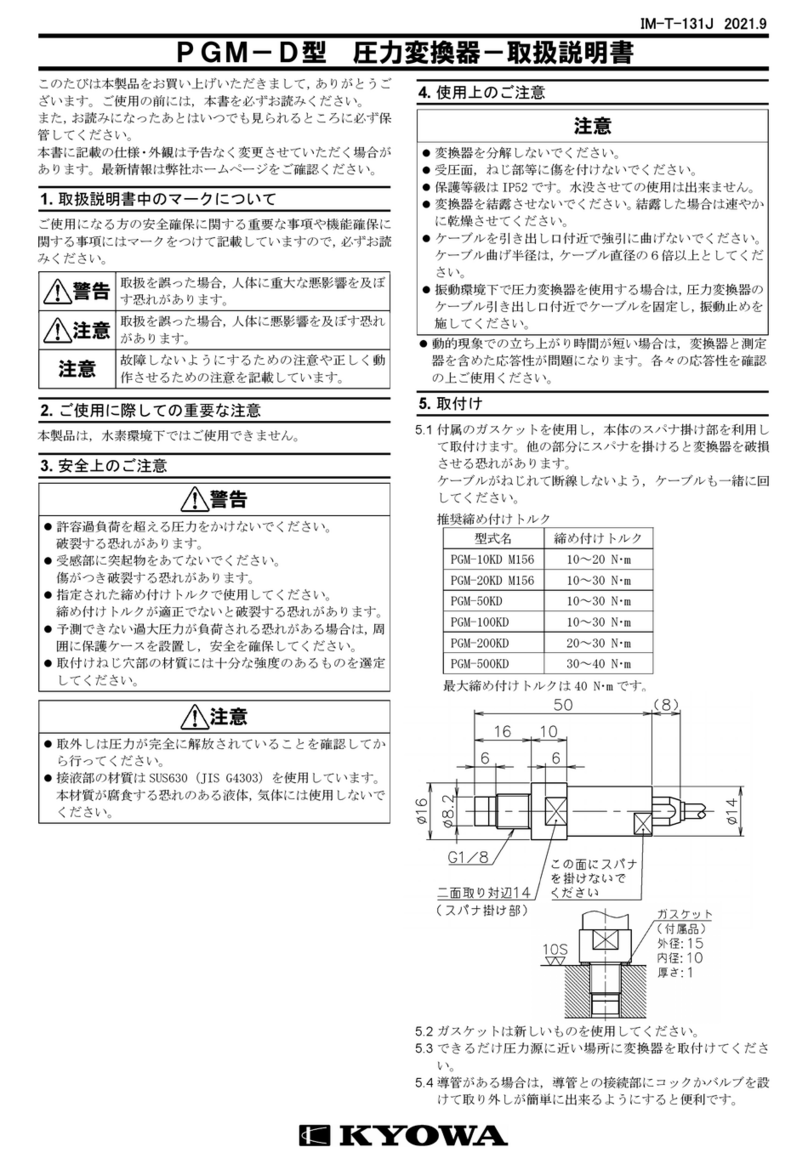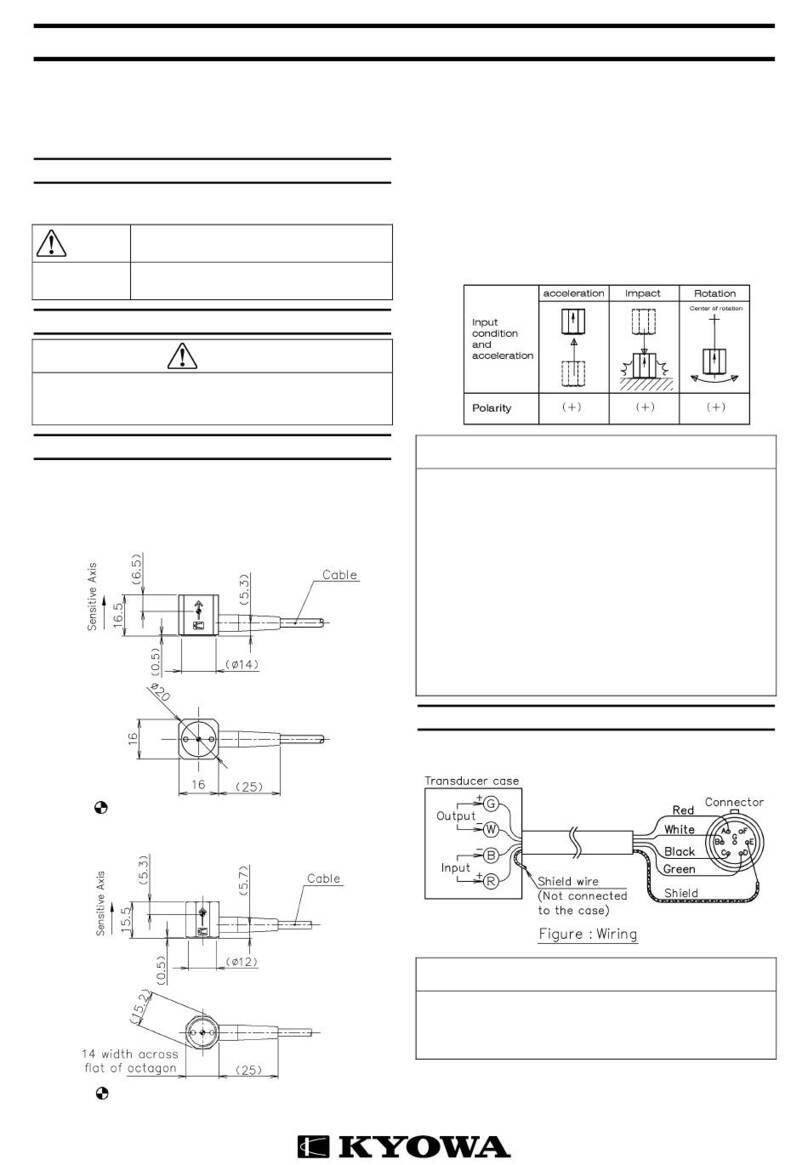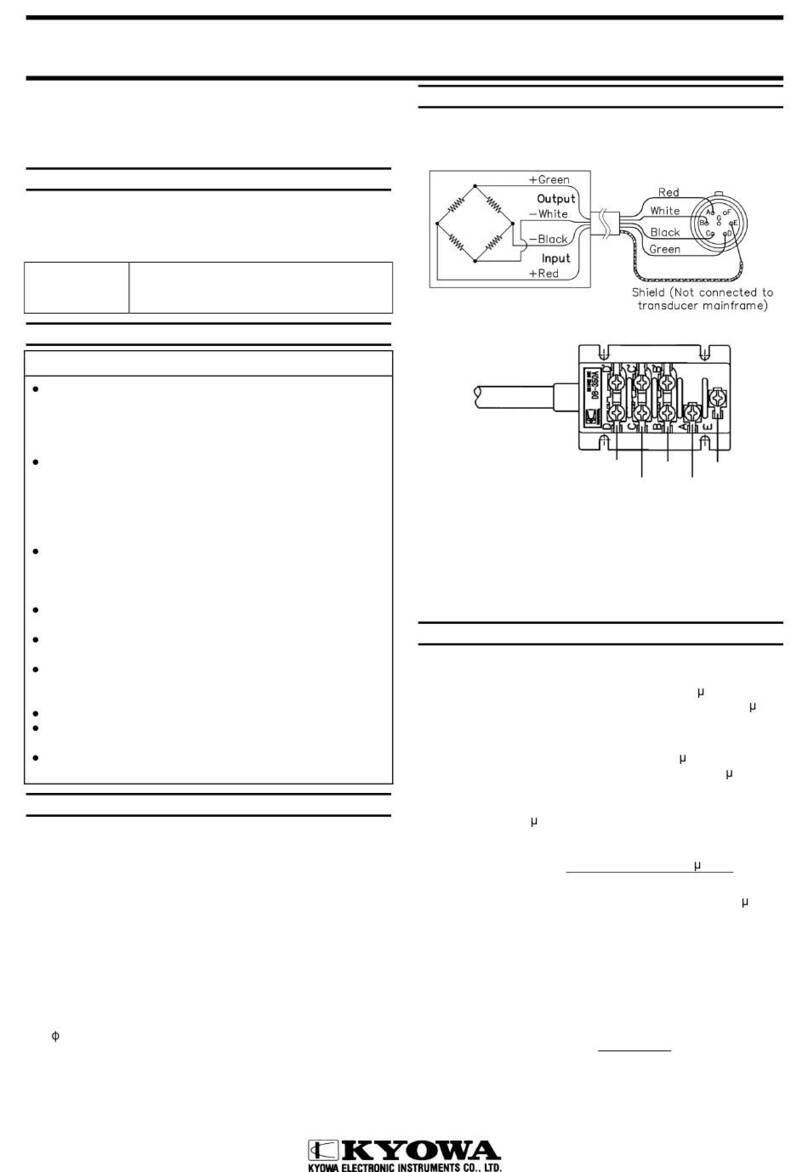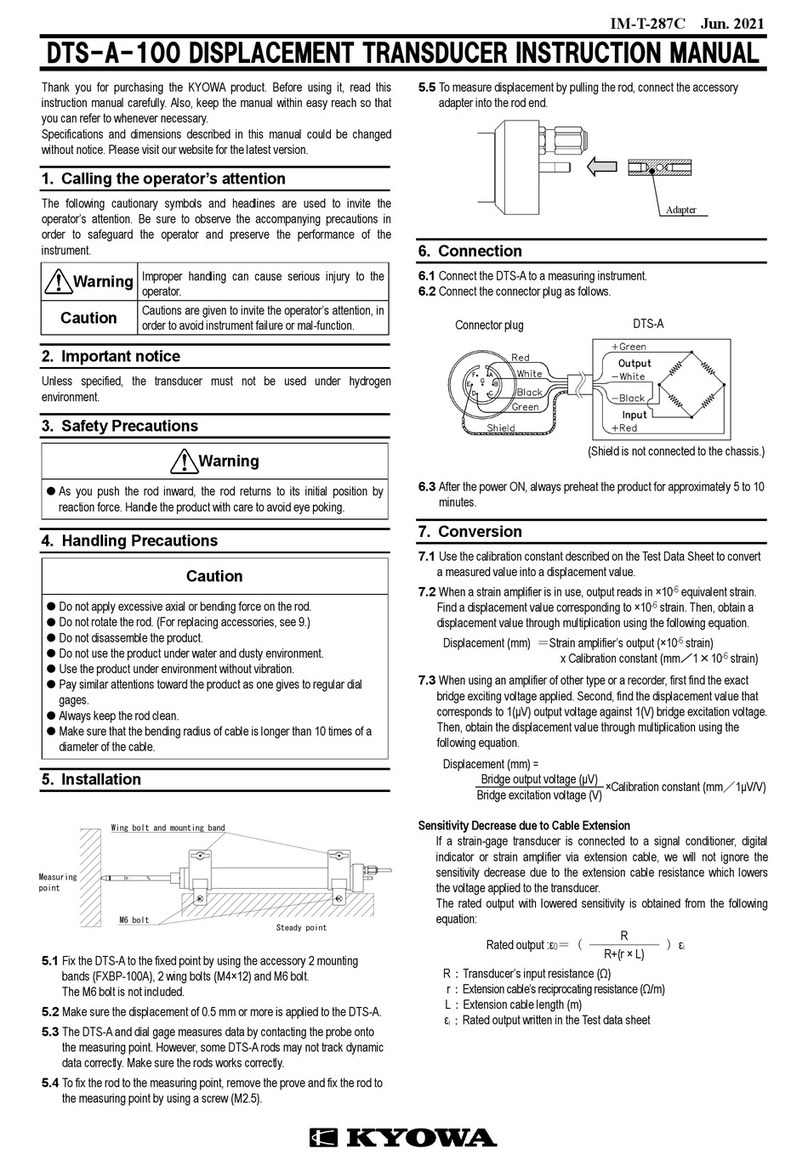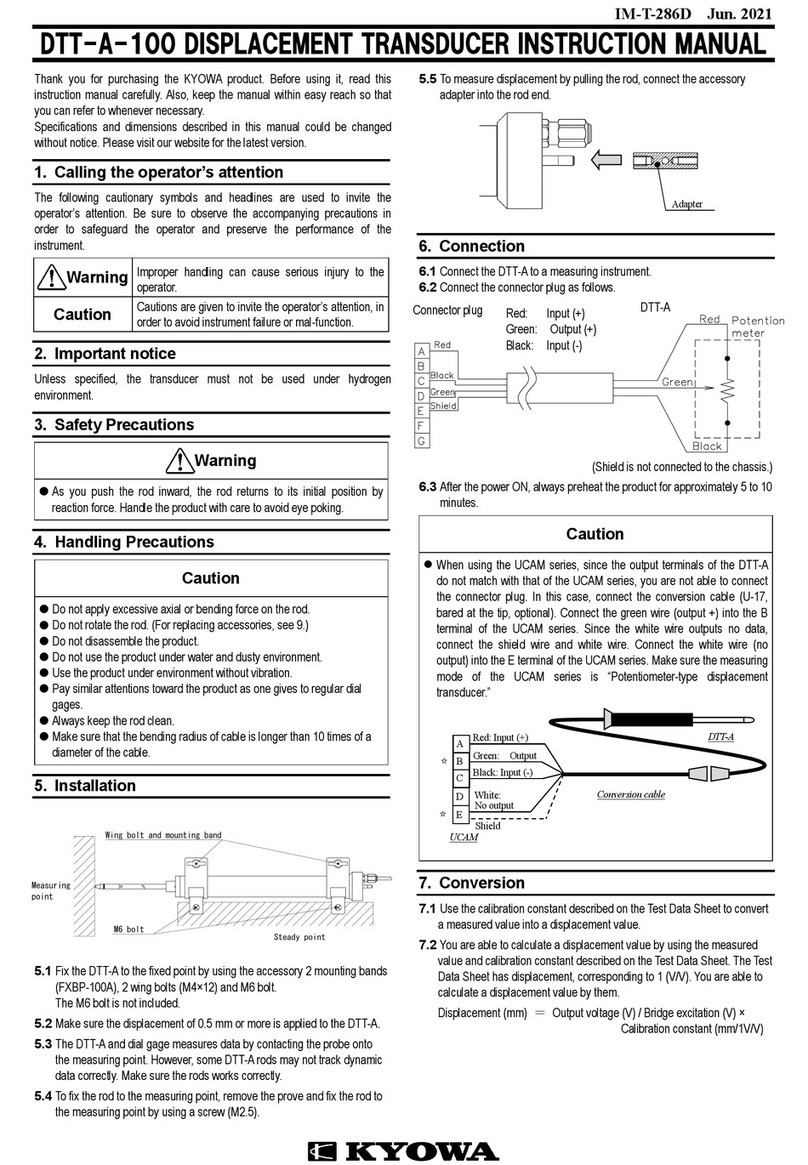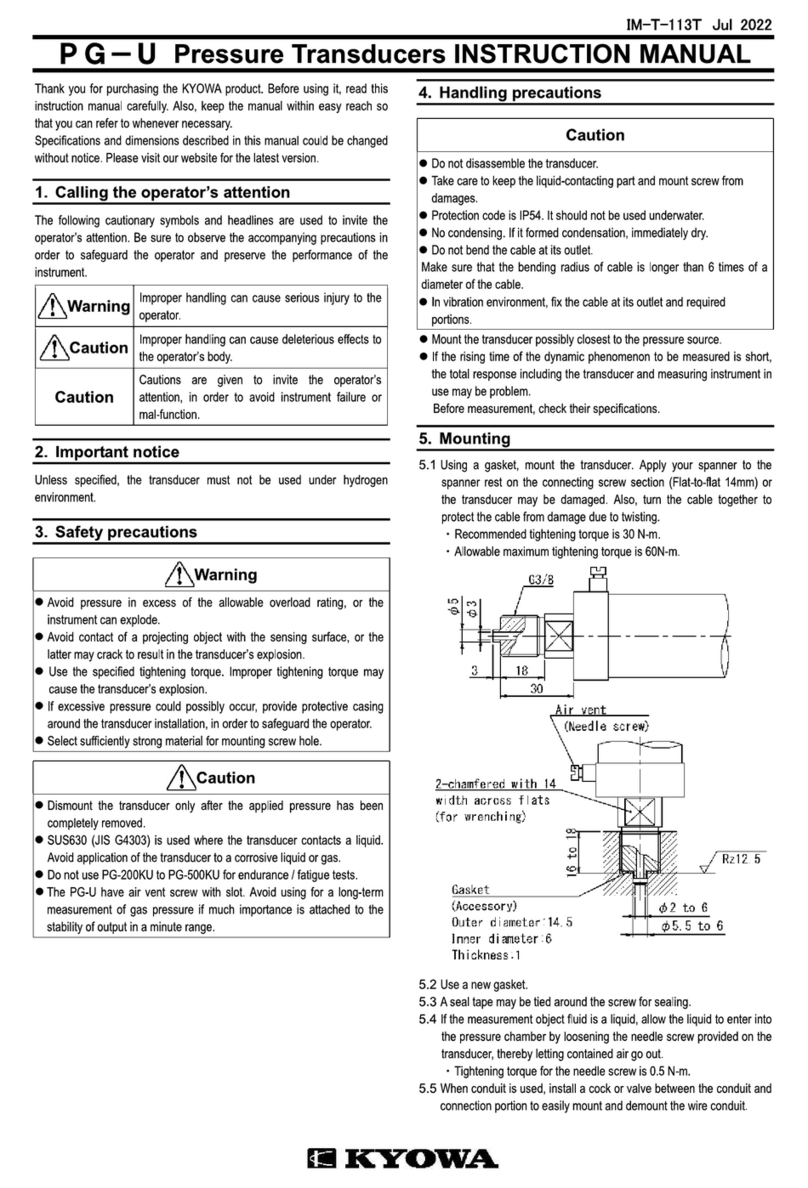
W ebsite : www.kyowa-ei.com
7. Conversion
7.1 Use the calibration constant described in the test data sheet to
convert a reading into a pressure value.
7. 2
When a strain amplifier is in use, output reads in ×10
-6
equivalent
strain. Find a pressure value corresponding to ×10
-6
strain. Then,
obtain a pressure value through multiplication using the following
equation.
Pressure (Pa) = Strain amplifier’s output (×10
-6
strain)
x Calibration constant (Pa
/
1×10
-6
strain)
7. 3 When using an amplifier of other type or a recorder, first find the
exact bridge exciting voltage applied. Second, find the pressure
value that corresponds to 1(μV) output voltage against 1(V) bridge
excitation voltage. Then, obtain the pressure value through
multiplication using the following equation.
Pressure (Pa) =
Bridge output voltage (μV) ×Calibration constant (Pa
/
1μV/V)
Bridge excitation voltage (V)
Sensitivity Decrease due to Cable Extension
If a strain-gage transducer is connected to a signal conditioner,
digital indicator or strain amplifier via extension cable, we will not
ignore the sensitivity decrease due to the extension cable
resistance which lowers the voltage applied to the transducer.
The rated output with lowered sensitivity is obtained from the
following equation:
Rated output :ε
0
=(
R
)
ε
i
R+(r × L)
R
:
Transducer’s input resistance (Ω)
r
:
Extension cable’s reciprocating resistance (Ω/m)
L
:
Extension cable length (m)
ε
i
:
Rated output written in the Test data sheet
8. M a i n ten a n ce an d in sp ectio n
8. 1 Avoid water, oil, dust, etc. on the connector.
8. 2 Recommend calibrate the product once a year or so. (Contact
your KYOWA representative.)
8. 3 If suspicious outputs have occurred, check the input resistance,
output resistance and insulation resistance. Provided that the
connector operates properly and that the insulation resistance
between the mainframe and conductors is below 100MΩ, the
cause may be failure.
In this case, contact your KYOWA representative.
Ca u tio n
To measure insulation resistance, apply a voltage lower than 50V
to the insulation resistance tester.
9. Sp eci fi catio n s
Models Rated capacity
PG-1TH 100MPa
PG-2TH 200MPa
◆
Performance
Rated Capacity See table above.
Nonlinearity Within ±0.2% RO
Hysteresis Within ±0.2% RO
Repeatability 0.15% RO or less
Rated Output 1.5 mV/V ±0.5%
◆
Environmental Characteristics
Safe Temperature -20 to 80
℃
Compensated Temperature -10 to 70
℃
Temperature Effect on Zero Within ±0.02% RO/
℃
Temperature Effect on Output Within ±0.01% /
℃
◆
Electrical Characteristics
Safe Excitation 15 V AC or DC
Recommended Excitation 1 to 10 V AC or DC
Input Resistance 350 ±1.5%
Output Resistance 350 ±1.5%
Accessory Cable 4-conductor (0.3mm
2
) chloroprene
shielded cable,7.6mm diameter by
3m long, terminated with connector
plug.
Sensor side: 1108-12A10-7F
Measuring instrument side:
PRC03-12A10-7M
(When connected the attached cable,
shield wire is not connected to the
case.)
◆
Mechanical Properties
Safe Overloads 150%
Natural Frequencies Approx. 250 kHz
Material Case: SUS (Metallic finish)
Liquid-contacting part: SUS630
Weight Approx. 220g (Excluding cable)
Degree of Protection
IP52 (IEC 60529)
Mounting Screw G1/2, male
Compliance Directive 2011/65/EU,(EU)2015/863
(10 restricted substances) (RoHS)
[NOTE]
Products with CE Marking are compliant European RoHS Directive.
◆
Accessories
Gasket (Mild copper) 3
Accessory Cable 1
Test Data Sheet 1
Instruction manual 1 (This book)

